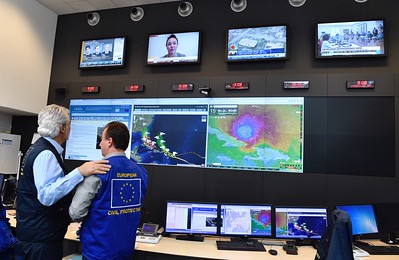In moments of crisis, every second counts. From natural disasters like earthquakes and hurricanes to human-made crises such as industrial accidents or conflict zones, the ability to respond swiftly and effectively can save countless lives. Technology has emerged as a crucial player in disaster response, offering innovative tools and systems to aid relief efforts. Let’s explore how technology is reshaping the way we approach disaster management.
1. Early Warning Systems
One of the most critical components of disaster response is early detection. Technologies like seismic sensors, weather satellites, and AI-driven predictive models are now capable of identifying potential disasters before they occur. For example:
- Earthquake Detection: Networks of seismic sensors provide early alerts, allowing people in affected areas to seek shelter before the tremors hit.
- Hurricane Tracking: Satellites monitor storm systems, predicting paths and intensities to help communities prepare for evacuation.
- AI Predictions: Machine learning models analyze historical and real-time data to predict flood zones or wildfire risks with remarkable accuracy.
2. Communication During Crisis
Disasters often disrupt traditional communication channels, making it challenging for responders and victims to connect. Technology has stepped in to bridge this gap:
- Mesh Networks: In areas where cellular networks fail, mesh networks enable devices to communicate directly with one another, ensuring connectivity.
- Satellite Phones and Internet: Devices like Starlink provide emergency communication in remote or infrastructure-damaged regions.
- Crisis Apps: Apps like Zello and Life360 allow users to communicate and share real-time locations, even in low-signal environments.
3. Drones for Search and Rescue
Unmanned aerial vehicles (UAVs) have become indispensable in disaster zones. Drones equipped with cameras, thermal imaging, and sensors assist in:
- Search and Rescue: Identifying survivors in hard-to-reach areas.
- Damage Assessment: Providing aerial views of affected regions to prioritize response efforts.
- Delivery of Supplies: Transporting medical kits, food, and water to stranded individuals.
4. Big Data and AI in Coordination
Managing disaster response requires analyzing vast amounts of data. AI and big data analytics streamline this process by:
- Resource Allocation: Determining where medical aid, rescue teams, and supplies are most needed.
- Social Media Monitoring: Scraping platforms like Twitter for real-time reports and cries for help.
- Crisis Mapping: Platforms like Ushahidi collect and visualize data to track crises and coordinate responses effectively.
5. Robotics in Hazardous Environments
Robots are stepping in where it’s too dangerous for humans. These machines are used to:
- Clear Debris: Robotic systems can remove rubble in collapsed buildings.
- Inspect Dangerous Areas: Robots with sensors navigate toxic or unstable environments.
- Assist Medically: Robotic arms perform surgeries or deliver medications in field hospitals.
6. Virtual and Augmented Reality (VR/AR) for Training
Preparing responders for disasters is as vital as responding itself. VR and AR technologies are transforming training:
- Simulated Scenarios: Virtual reality recreates disaster environments for responders to practice without real-world risks.
- Augmented Reality Tools: AR devices overlay critical information, like maps and victim locations, onto real-world views.
7. Crowdsourcing and Community Participation
Technology also empowers ordinary people to contribute to disaster relief:
- Crowdsourced Mapping: Volunteers worldwide use platforms like OpenStreetMap to create accurate maps of disaster areas.
- Fundraising Apps: Apps like GoFundMe and GiveDirectly streamline financial contributions to affected communities.
- Citizen Reporting: Apps enable locals to report damage or needs, providing responders with valuable on-the-ground insights.
8. Portable Medical Technology
Portable tech has revolutionized healthcare delivery in disaster zones:
- Mobile Clinics: Trucks equipped with diagnostic tools and telemedicine capabilities bring healthcare to remote areas.
- Wearable Health Monitors: Devices track vital signs of victims and relay data to medical teams.
- Rapid Diagnostics: Portable labs can test for diseases or contaminants within minutes.
The Challenges Ahead
While technology offers remarkable solutions, challenges remain:
- Accessibility: High-tech tools may not be available in developing regions.
- Infrastructure Dependency: Many technologies rely on stable internet and power, which disasters often disrupt.
- Cost: Cutting-edge tools can be prohibitively expensive.
Conclusion
Technology has become a lifeline in disaster response, enhancing the speed, efficiency, and scope of relief efforts. From early warnings to life-saving robotics, these innovations are changing how we approach crises. However, ensuring equitable access to these tools is essential for creating a truly resilient global community. As technology continues to evolve, its role in disaster response will undoubtedly grow, offering hope in the face of adversity.
